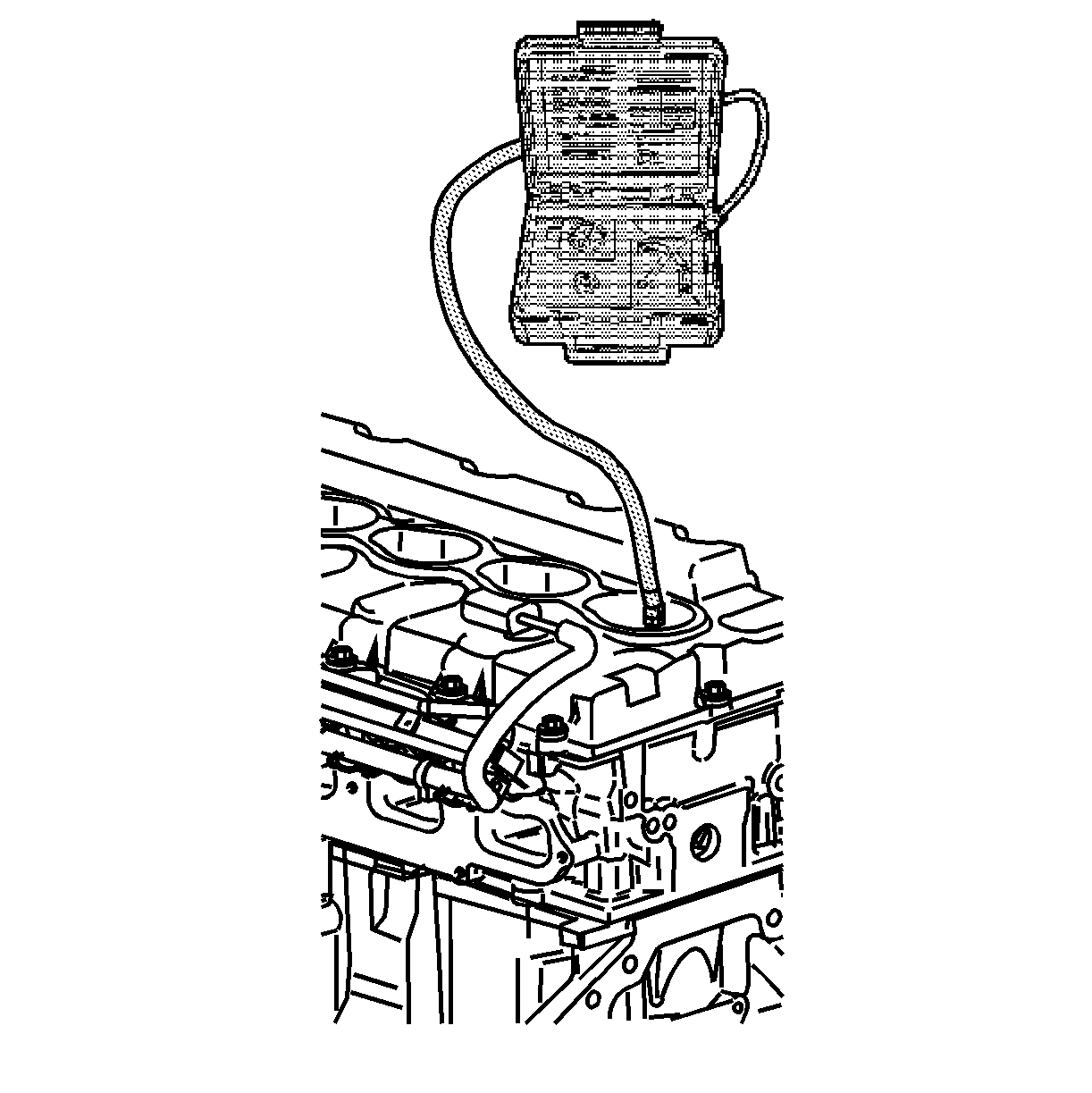Tools Required
J 35667-A Cylinder
Leakdown Tester
With the use of air pressure, a cylinder leakage test will aid in the
diagnosis. The cylinder leakage test may be used in conjunction with the engine
compression test, to isolate the cause of leaking cylinders.
Caution: Unless directed otherwise, the ignition and start switch must be in the OFF or LOCK position, and all electrical loads must be OFF before servicing
any electrical component. Disconnect the negative battery cable to prevent an electrical spark should a tool or equipment come in contact with an exposed electrical terminal. Failure to follow these precautions may result in personal injury and/or damage to
the vehicle or its components.
- Remove the
battery ground (negative) cable. Refer to Battery Disconnect in Engine Electrical.
- Remove the spark plugs. Refer to Ignition System in Engine Electrical.
- Install J 35667-A
.

- Measure each cylinder
on the compression stroke, with the valves closed.
Important: It may be necessary to hold the crankshaft balancer bolt, to prevent
piston movement.
- Apply air pressure, using J 35667-A
. Refer to the manufacturer's instructions.
- Record the cylinder leakage readings for each cylinder.
Important:
| • | Normal cylinder leakage is from 12 to 18 percent. |
| • | Make a note of any cylinder with more leakage than the other cylinders. |
| • | Any cylinder with 30 percent leakage or more requires service. |
- Inspect the four primary areas, to properly diagnose a leaking cylinder.
- If air is heard from the intake or exhaust system, perform the
following procedure:
| • | Remove the camshaft cover. |
| - | Ensure the valves are closed. |
| - | Inspect the cylinder head for a broken valve spring. |
- If air is heard from the crankcase system at the crankcase (oil
filler tube), perform the following procedure:
| • | Remove the piston from the suspect cylinder. |
- If bubbles are found in the radiator, perform the following procedure:
- Remove the J 35667-A
.
- Install the spark plugs. Refer to Ignition System in Engine Electrical.
- Install the battery ground (negative) cable. Refer to Battery
Disconnect in Engine Electrical.

